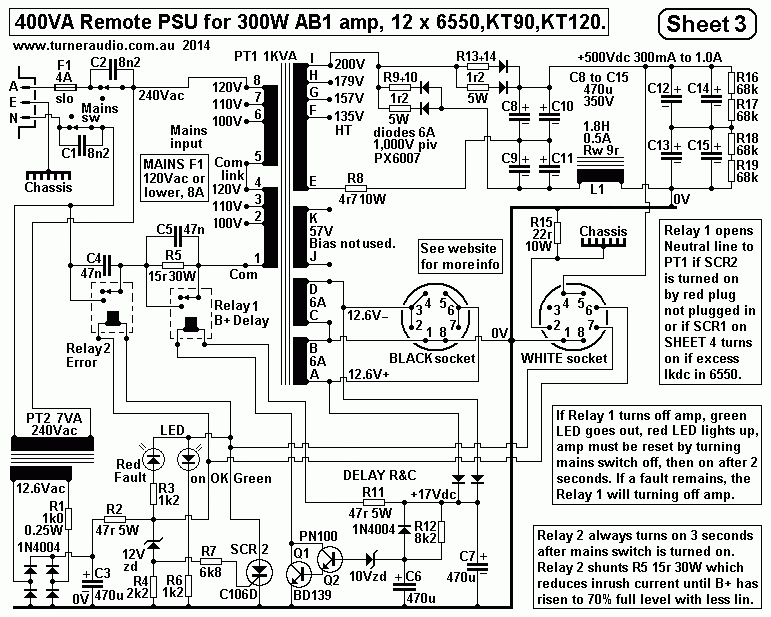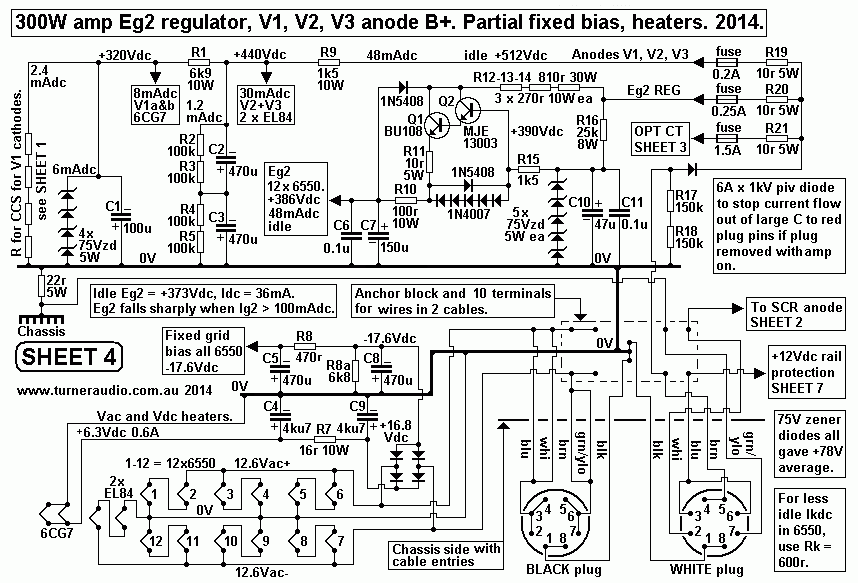
| HT tap Vac |
B+ approx +Vdc |
Ia, mAdc each
tube approx idle |
Ek approx +Vdc Rk = 500r |
Eg1 bias -Vdc |
12 x octal
based tube type number. |
Ea = B+ -Ek |
Pda idle each tube Watts |
Max AB Po Watts |
Screen supply
B+ +Vdc |
Eg2 reg series R, ohms r |
| 200 |
512 |
42 |
24 |
-18 |
6550,KT88 KT90,KT120. |
488 |
20.5 |
400 |
387 |
810r |
| 179 |
451 |
40 |
21 |
-14 |
6550,KT88 EL34,6L6 KT66. |
430 |
17.2 |
300 |
387 |
540r |
| 157 |
395 |
40 |
21 |
-10 |
6550,KT88 |
385 |
15.4 |
240 |
312 |
270r |
| 135 |
340 |
35 |
18 |
-4 |
EL34,6L6 KT66. |
336 |
13.4 |
180 |
312 |
270r |

